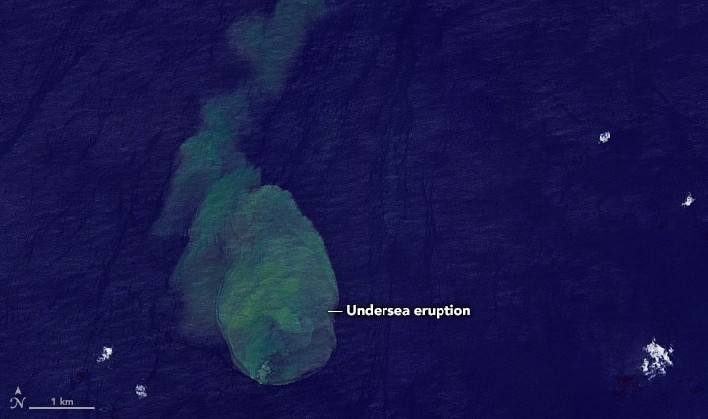NASA Captures A Spectacular Satellite Image Of Sharkcano Underwater Volcanic Eruption

Kavachi Volcano, located in the Solomon Islands, entered an eruptive phase in October of last year. Satellite data has shown discolored water around the underwater volcano on several days in April and May 2022. The above image was captured on May 14th, and shows a plume of discolored water being spewed from the submarine volcano. Sharkcano lies about 24 kilometers (15 miles) south of Vagnu Island.
Researchers have found that plumes like those associated with Kavachi are superheated, acidic water that typically contain particulate matter, volcanic rock fragments, and sulfur. It has also been found that some microbial communities thrive on sulfur. The existence of sharks in and around the volcano spurred "new questions about the ecology of active submarine volcanoes and the extreme environments in which large marine animals can exist," researchers wrote in a 2016 Oceanography article, "Exploring the 'Sharkcano'."
The papers' researchers added, "Surprisingly, this hostile environment hosts a vibrant ecosystem, including gelatinous zooplankton, reef fish and sharks... do these groups have a greater chance of surviving human-induced changes to ocean chemistry and periods of increased submarine volcanism on a global scale?"
Sharkcano has created ephemeral islands on more than one occasion, but the islands, up to a kilometer long, have all eroded and washed away due to wave action. At present, the summit of the volcano is estimated to lie 20 meters (65 feet) below sea level. The base of the volcano lies on the seafloor at a depth of 1.2 kilometers (0.75 miles).
According to NASA, the volcano erupts almost continuously and steam and ash are often visible. A nearby island is named for a sea god of the Gatokae and Vangunu peoples, and is sometimes referred to as Rejo te Kvachi, or "Kavachi's Oven."
Top Image Courtesy of NASA/Earth Observatory

